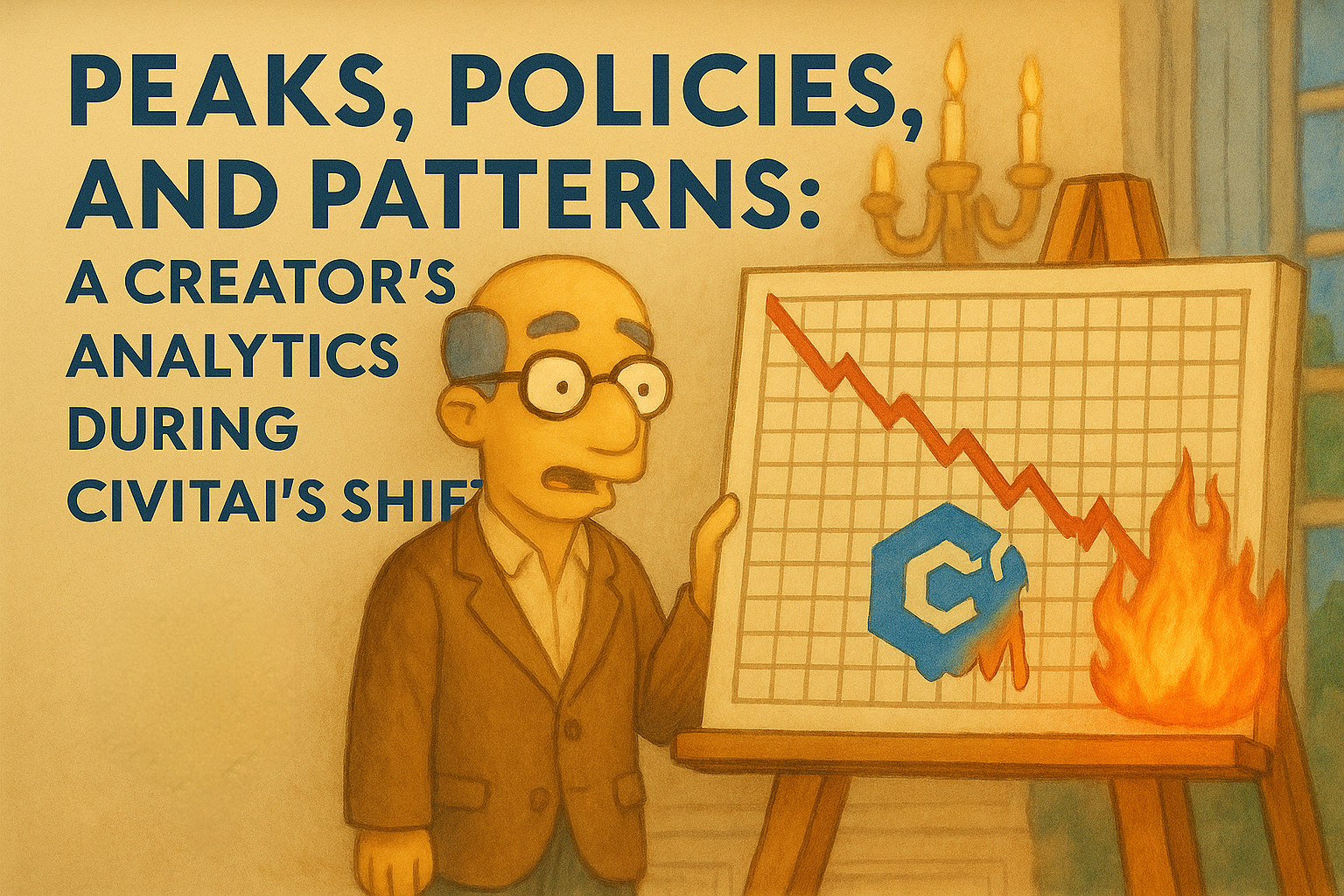Peaks, Policies, and Patterns: A Creator’s Analytics During CivitAI’s Shift
In the evolving landscape of AI-generated content, momentum can be everything. What grows fast, often fades just as quickly. Over the past few months, I’ve observed a dramatic rise and measured slowdown in the performance of my LoRA-based models on CivitAI. What follows isn’t just a retrospective of my own uploads, but a data-driven reflection of broader platform dynamics that may be impacting creators across the board.
From Ascent to Apex
Through early 2025, engagement with my models was strong and accelerating. The peak came on 24 April 2025, when I recorded a personal best: ~245,739 daily generations across all slider models (excluding checkpoints). At that point, models like the Dramatic Lighting Slider and Pony Realism Slider were drawing between 30,000–45,000 generations daily each, with overall traffic holding steady.
This wasn’t just noise. It was the result of consistent updates, strategic tagging, and a clear visual identity. Then, things shifted.
The Turning Point
Within 10 days of peak performance, traffic began to show a clear, sustained decline. From 8 May 2025 onward, daily generation counts dropped across almost every model. The average daily total over the following weeks fell by ~45,000 generations per day. By early June, this decline had stabilised at around 180,638 daily generations — a 20% reduction from the peak.
The data alone was compelling. But context made it clearer.
The Policy Shift
What happened in that window? A major platform-wide moderation overhaul.
In April 2025, CivitAI introduced new moderation rules, driven largely by payment processor pressure. These changes included:
Stricter enforcement of adult content moderation
Filtering of real-person or celebrity likeness models
Hiding of content without sufficient metadata
Noise alteration mandates on BYOI (Bring Your Own Image) features
Monetisation restrictions on flagged uploads
Though my content didn’t violate these policies, its visual style and tags were clearly impacted by the newly aggressive filtering and visibility systems.
The External Signals
Public data shows a sharp and prolonged drop in overall platform traffic beginning in April 2025. This decline in visibility coincided with a noticeable rise in engagement and reach for several competitor platforms. While correlation isn’t causation, the timing strongly aligns with the moderation rollout and a broad shift in user attention and platform behaviour.
What the Numbers Tell Us
Engagement drop across models began almost immediately after policy change enforcement
Community visibility was affected even for compliant or safe content
Platform-wide traffic decline aligns with observed slowdown in model engagement
Whether coincidental or causal, the data is consistent.
Where That Leaves Us
For creators, this is a moment of pause, not panic.
It’s an opportunity to observe what works under new platform dynamics. Models tied to softer themes, more abstract styles, or broader tagging may gain traction where others slow down. Metadata and tagging practices now matter more than ever. And platforms themselves may need to adapt or communicate better when sweeping policy changes go live.
In short: visibility is no longer just about quality. It’s about strategy, compliance, and timing.
Big shoutout to 0dang for supporting the data collection, analysis, and overall investigation that helped shape the insights in this article.
Note: This article was structured with the assistance of ChatGPT to ensure clarity, consistency, and data-driven presentation.






